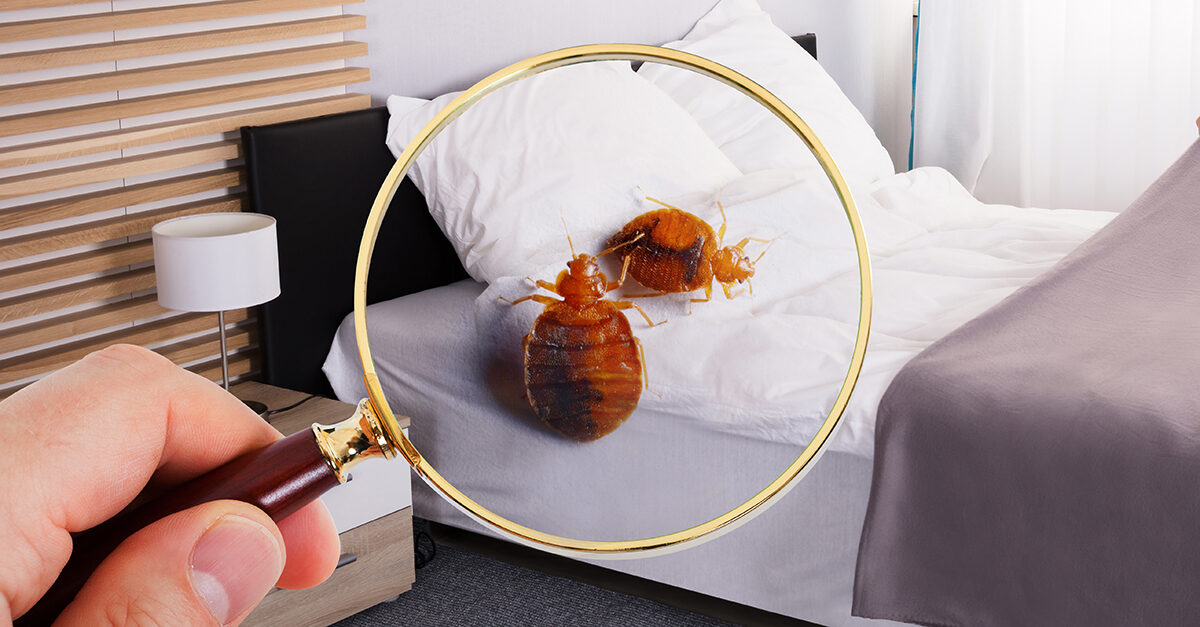Is that mess in your facility’s boardroom snack crumbs or ant waste? Is that a raisin on the office furniture or a bedbug? Was that a sesame stick in the cafeteria or a cockroach egg capsule? Should you remove questionable debris immediately or leave it until pest control comes next month?
These are all questions facility managers and cleaning crews have pondered. To ensure the health and hygiene of a building, facility managers know the importance of qualified cleaning professionals and a strong relationship with a pest management company. While many buildings have cleaning crews come in daily, most have pest management professionals (PMP) visit the building only occasionally (e.g., monthly).
For this reason, cleaning professionals may encounter signs of a pest before a PMP. To people unfamiliar with pest signs, a mess is a mess, and their cleaning may remove valuable clues and information a PMP needs to help identify a pest infestation. One way to prevent losing this valuable information is to document possible signs of a pest during routine cleaning and building maintenance.
With a little bit of knowledge, custodians can gather evidence for PMPs without compromising the cleanliness of a facility. Like a good detective partnership, each person plays a separate but distinct role to uncover pest problems. Review the following information for protocols on documenting clues and evidence left behind by three common pests.
Collect evidence in four steps
Custodians obviously cannot leave dirt in a building, even if it could be a clue left behind by a pest. However, failing to leave evidence could lead to an unnoticed pest infestation costing thousands
of dollars to eliminate. How can you balance cleaning with evidence collecting? Follow the four-step process below:
- Keep a watchful eye. Focusing on the task at hand and not recognizing what the clues are sayingor even that clues exist, is very easy. However,
just knowing that a pile of dirt may come from sources other than messy office workers is crucial. Ask yourself if the mess is in an unlikely place, such as “salt and pepper” regularly found
in office furniture. If a mess seems out of place, maybe it is more than regular dirt. - Collect clues. Carry an outline of the building floorplan to serve as a map for recording suspicious evidence. Mark where you found possible signs of a pest and write a couple of sentences describing the clue. Include important information such as the date and location of the discovery, as well as the color, shape, and size of the debris. Finally, take some pictures and attach them to the map and written description. For best results, collect the evidence in a baggy and store it in a dedicated cooler.
- Go about business as usual. Once you have collected the evidence, clean, sanitize, and disinfect the space as normal.
- Present the evidence to the PMP. Be available to answer any questions he or she may have.
Consider three common suspects
Below, you will find evidence that points to three common insect suspects. Keep in mind that in addition to these three, other pest outlaws could be in the building as well.
Bedbug
Alias: Red coates, mahogany flat, chinches
Description: The insect’s eggs are small, white ovals about the size of a grain of salt that may be hard to see with the naked eye. Immature bedbugs are pale tan, often with black spots in the middle, and range in size from a couple of grains of salt to less than 3/16 of an inch. Adult bedbugs are round, rusty brown to red, and around 3/16 of an inch.
Charges: Biting people, causing mischief and dismay, soiling surfaces with eggs and black and yellowish spots
Hideouts: Bedbugs spend most of their time in the same places people do—in and around beds, and in chairs and couches.
Evidence: Look for eggs and poop that can resemble grains of salt and pepper, large black stains underneath cushions or along the edge of seams, and yellow/tan shed skins, as well as the
bedbugs themselves.
German Cockroach
Alias: Roach, waterbug, steamfly
Description: Cockroach eggs are stored in capsules that are tan, 3D, and ¼ to 3/8 of an inch long. Immature German cockroaches range in size by age but are generally less than 5/8 of an inch. They have no wings, are oval in shape, and are dark brown with a lighter tan patch in the middle of their bodies. Adults are also oval-shaped, brown to tan with two dark lines between their heads and wings, and between ½ to 5/8 of an inch long.
Charges: Gross conduct, invading buildings, spreading germs on food and surfaces, causing asthma
Hideouts: Cockroaches prefer to live in dark cracks and crevices in warm, humid spaces. However, they come out looking for food. People often see them in kitchens, bathrooms, and other areas with food and water. You may encounter German cockroaches under objects such as calendars, refrigerators, ice machines, kitchen appliances, trashcans, and other items not moved often.
Evidence: Look for spots that are light to dark tan and may resemble pepper, smears in the corners of rooms and along the tops of door frames or the opening of a crevice, and dead cockroaches or shed skins. You may notice an oily, musty odor.
Carpenter Ant
Alias: Large black ant, wood ant
Description: Workers vary in size but are generally large (1/4 to 1/2 of an inch). They are black, black and red, or tan with three distinct body regions.
Charges: Destruction of wood, scaring unsuspecting people, stealing food
Hideouts: Carpenter ants are often found outside but can enter facilities around door and window frames, eaves, plumbing and utility lines, and where shrubs/sticks touch the outside of buildings. You may find their nests in wood (preferably damaged by moisture and fungi), insulation, or wall voids.
Evidence: Look for ants with and without wings, small openings in wooden surfaces, and sawdust mixed with other insect parts. Listen for rustling sounds in the wood surfaces.
Close the case
No one knows a building’s secrets the way cleaning professionals do. Hotel housekeepers may notice persistent black speckles on the sheets that do not come out during a regular wash. Office cleaning crews may encounter sawdust in isolated parts of the building. Commercial kitchen custodians may frequently find rectangular-shaped debris. Although these signs may be critical clues for a PMP, cleaning crews may inadvertently remove them before pest control workers arrive.
Accurately distinguishing a mess from pest evidence can be difficult and should be left to a pest control professional. However, custodians need to keep the space clean in the meantime. Keeping a watchful eye and recording evidence of suspected pest infestations can allow cleaning professionals to do their job without eliminating critical clues. Together, the cleaning professional and the PMP can protect the health and hygiene of the building and its inhabitants.




